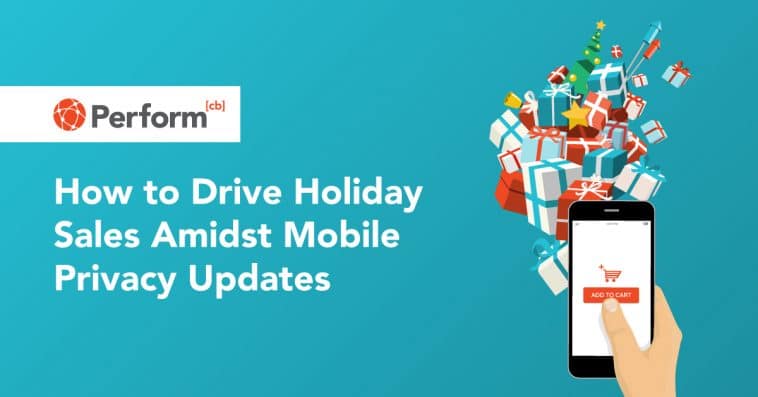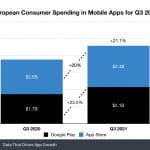In response to consumers having limited access to in-store shopping over the last year and a half, mobile e-commerce has skyrocketed and is trending to continue in 2022. According to eMarketer, mobile commerce is expected to increase by 18.8% to $97.15 billion this holiday season, with most activity stemming from in-app shopping. In an effort to safely capitalize on this rapid mobile growth, app marketers must take into account the industry’s recent privacy updates as holiday campaigns kick-off.
iOS 15 Updates
On September 20th, Apple released iOS 15, moving even closer to a fully opt-in model where consumers have control of their data privacy and its third-party access. While privacy updates continue to impact the mobile space, iOS 15 will also have a strong impact on email marketers, with one of the most significant changes being the inability to track email opens on the iPhone Mail app. When consumers opt-in to Mail App Protection, it will prevent email marketers from accessing the IP address and email open activity for iOS users. As privacy restrictions continue to hinder targeted advertising, mobile marketers will need to turn to their own first-party user data to effectively reach consumers this season.
Marketers Continue Shift to First-Party Data
As restrictions on mobile advertising rise, it’s important brands and publishers build ‘first-party relationships’ with users to personalize the customer experience and gather first-party data. With first-party data being collected and owned in-house, mobile marketers have the ability to track metrics such as mobile app interactions, purchase history, cart abandonment, behavior preferences, and more. When mobile marketers are able to deliver a highly personalized customer experience, consumers are more likely to provide feedback in regard to their in-app behavior and preferences. For example, first-party data is extremely valuable as it allows marketers to follow up with personalized SMS marketing based on users’ in-app shopping behavior, ultimately resulting in more purchases. As mobile marketers continue collecting first-party data and feedback through holiday campaigns, these insights will allow future initiatives to be even more engaging.
Find Success Through a Multi-Channel Approach
iOS 15 privacy changes no longer allow mobile marketers to track the same consumer across multiple channels. However, shoppers will engage with more touch points than ever when considering their purchases this season. While more consumers plan to do shopping in-store this year, 70% say their holiday shopping journey will include digital touchpoints. For mobile marketers, delivering a seamless experience across different channels to stay top-of-mind throughout the extended holiday season is a top priority—and challenge.
Mobile marketers must first establish the conversion point they’re looking to drive consumers toward when taking a multi-channel approach; want to drive shopping app installs? Looking to target existing users to make a purchase in-app? Depending on campaign goals and KPIs, employing various strategic distribution channels such as contextual targeting, social media, and SMS will be extremely beneficial for mobile marketers this holiday season.
Contextual Targeting
Traditionally, mobile marketers have used device IDs to employ user-based behavioral targeting, which relies on user information collected over several past interactions. As device IDs are no longer available to iOS, marketers must shift their focus on what the user is consuming at that very moment. With contextual targeting, marketers can reach relevant audiences without the need to track, store and analyze personal data, and therefore remain unhinged by the loss of the IDFA.
Contextual ads are targeted advertisements that appear on websites or other media, such as content displayed in mobile browsers, selected based on the identity of the user and the content displayed. Common examples include push notifications, pop-ups, pop-unders, and in-text ads. Contextual targeting is an effective way to create a highly personalized experience for consumers while still complying with mobile privacy changes. By focusing on the context of the ads, it will push marketers to invest in the channels where consumers are spending the majority of their time.
Social Media
As a result of the boom in e-commerce and increased social media consumption in 2020, spending on social media has risen by 35.8% in 2021, now reaching nearly $37 billion. The social commerce market is one of the fastest growing, and is bound to reach new heights this holiday shopping season. This channel can be a strategic way for mobile marketers to reach desired consumers amidst privacy restrictions. Influencers, creative in-story CTAs, and user-generated content, among others, are all popular ways brands can establish a relationship with consumers and push them to convert within their favorite social apps. In an effort to reach the masses on popular apps such as Instagram, Facebook, Pinterest, and TikTok, mobile marketers must engage followers with discounts and generalized messaging around holiday shopping trends. Popular social messaging tactics include giveaways of popular holiday items, discount codes, holiday gift guides, and more. The goal of social commerce should be to make it as easy and convenient as possible for followers to search, discover, compare products, and buy directly in-app.
SMS Marketing
With less than a 5% opt-out rate, SMS will continue to be a winning distribution channel for many as it has the power to drive personalized messaging despite privacy changes. With SMS distribution, marketers have the ability to access real-time, reliable results and optimize where necessary right away. Being that SMS is powered by first-party data, marketers can segment customers to further improve the consumer experience by performing granular targeting. As marketers utilize SMS marketing along with additional distribution channels, it will enable them to collect more first-party data, deliver value, and drive revenue this holiday shopping season and beyond.
Is Your Mobile Holiday Strategy Ready?
When taking a multi-channel approach this holiday, mobile marketers will find that they can still successfully reach consumers amidst the release of iOS 15 and restricting privacy regulations. With the holiday’s biggest sale days quickly approaching, mobile marketers must utilize first-party data to test various channels and create a seamless user experience for in-app shoppers.
Reach out to our team of mobile experts to make sure you’re well-equipped for e-commerce success this holiday season.







Comments
Loading…